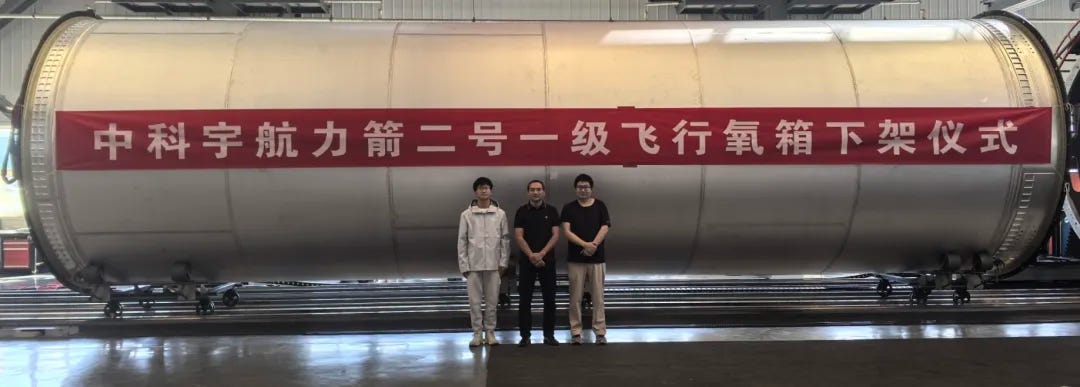iSpace and CAS Space progress with reusable rockets
Two more reusable rocket efforts have passed milestones on the road to launch.
With the recent major reusable rocket tests from LandSpace and Deep Blue Aerospace, iSpace and CAS Space’s efforts on their own vehicles have gone a little more unnoticed. So let’s go over the progress on Hyperbola-3 and Kinetica-2!
If there are any problems with translations in this post please do reach out and correct me.
Hyperbola-3 Wind Tunnel Testing
Back on September 20th, iSpace shared that it had conducted a wind tunnel test of a scaled-down Hyperbola-3 first-stage. These tests in the wind tunnel were to model the aerodynamic forces the vehicle may face during its re-entry burn, unpowered descent, and landing burn.
iSpace has previously performed wind tunnel tests for Hyperbola-3, and the now-canceled Hyperbola-2, to understand the vehicle’s aerodynamic properties. This was the first wind tunnel test to understand recovery burns. In a blog post about the test iSpace said the following:
“The unique landing and recovery process of a reusable launch vehicle makes its flight envelope have typical cross-domain characteristics of large airspace and wide speed range.” — “How to achieve high-precision prediction of aerodynamic characteristics under a large envelope and how to design an aerodynamic shape with optimal comprehensive performance within the full mission envelope are key issues that affect the success or failure of rocket recovery.”
Hyperbola-3 is currently expected to conduct its first flight and booster recovery in 2025.
First Kinetica-2 liquid oxygen tank completed
CAS Space announced on September 21st that it had completed its first liquid oxygen tank for the first-stage of its Kinetica-2 launch vehicle. This tank is one of three that will be on the tri-core first-stage of Kinetica-2, six propellant tanks will be needed on the vehicle’s first stage.
Each of the first-stage liquid oxygen tanks are 12 meters long and 3.35 meters in diameter and made out of a 5A06 aluminum-magnesium alloy. CAS Space also stated the following about some of the technical details:
“The front and rear short shells adopt a grid-reinforced wall plate structure, and the front and rear bottoms are processed using the traditional "one ring and eight vertical" block forming and tailor welding methods. The high welding technology of 5A06 material is used to simplify the design process and reduce production costs. Manufacturing difficulty; the whole box adopts the light tube structure, which shortens the manufacturing cycle and reduces the manufacturing cost compared with the traditional grid-reinforced structural wall panels on the basis of maintaining the axial pressure bearing capacity.”
With the first liquid oxygen propellant tank rolling off the production line, CAS Space believes they have verified the structural design and production process. Kinetica-2 is now at a mature stage of development with a solid technical foundation, according to the company.
Kinetica-2 is currently targeting a first flight in the summer of 2025.
Chang’e 6 Documentary
In addition to these hardware developments, CGTN has released its documentary on the Chang’e 6 mission. This documentary is fantastic and interviews many people involved with the mission. CGTN also recently released episode three of ‘Race to the Future’, which spends the first 1/3 of its runtime with some of China’s launch photographers during the Chang’e 6 launch.
Both of these videos are embedded below (if you’re reading this in your email inbox you will be redirected to YouTube).



